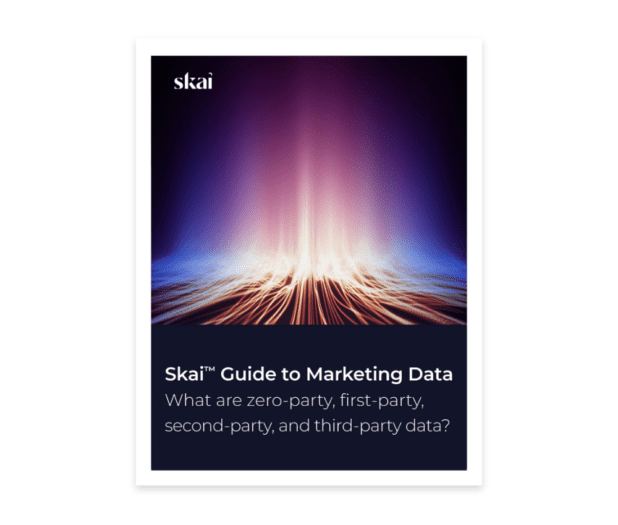Skai Guide to Marketing Data
What should a marketer do?
Even with limitations on data, the reality is that there is still plenty of data to use. To adapt, marketers need to up their game and understand the available data types: what they are, the pros and the cons, and how to best apply them.
In this Skai Guide to Marketing Data, learn about the different types of data and what you need to know to use them successfully.


How much do you know about the four types of marketing data?
- Zero-party data. Information consumers voluntarily share with companies, such as opt-in email addresses, survey responses, etc.
- First-party data. User-level data tracked from company engagement, such as purchase history, website or app usage, etc.
- Second-party data. First-party data is shared securely with a partner company.
- Third-party data. Data collected on users not directly related to the company collecting it.
Learn about these four key data types in this new report.
The future of marketing is omnichannel and fueled by data.
“Data may be important to today’s marketing but is absolutely required to successfully create the omnichannel marketing campaigns of the future. By understanding how customers interact with your brand across all channels, you can create a unified experience that meets their needs and exceeds their expectations. Data is the glue that will hold all of these connections together.”
Just as data is increasing in value and becoming more critical, it’s getting harder to collect. This friction is challenging for marketers to navigate.
On the one hand: A robust data program is needed to succeed.
Marketing leaders know that data is a critical component of good decision-making. The pandemic increased online commerce and advertising competition, both of which are powered by data.
On the other hand: Data is becoming more scarce.
Ongoing privacy policies and regulations are pulling back the volume of data that marketers have become accustomed to using. Moreover, they will have even less of it as we move forward.
The answer?
Everyone on your team should have data fluency and understand the four data types.

Read this complimentary report today to learn how marketers approach walled garden advertising and more.
Read this report today to learn about the four types of marketing data.
- Understand the data types: zero-party, first-party, second-party, and third-party
- Discover the benefits and values of each
- Find out how each data type is collected
- Learn the challenges and opportunities